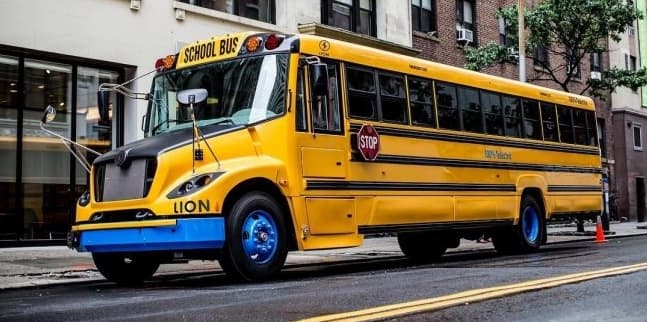With each passing year, mobile technologies are becoming an integral part of our daily lives. This is especially true for public transportation in the United States, where modern applications and payment systems significantly simplify the travel process for millions of passengers. In this article, we will look at how mobile technologies are transforming public transportation, making it more accessible and convenient.
1. Route planning applications
One of the main advantages of mobile technologies is the ability to plan routes using various applications. Programs such as Google Maps, Apple Maps, Transit and Moovit allow users to quickly find the best routes to their destination. They offer information on schedules, delays and route changes, making the trip more predictable and comfortable.
Passengers can choose between different modes of transportation – buses, subways, trams – and even combine them to reach their final destination. For example, in large cities such as New York and Chicago, users can easily switch between different transport systems, which saves a lot of time.
2. Simplified fare payment
Another important aspect is the ability to pay for your fare via mobile apps. Many transit systems in major cities like Los Angeles and San Francisco have implemented contactless payments via mobile apps like Citymapper or specialized apps from local transit agencies.
Riders can now pay their fare by simply holding their smartphone to the terminal, eliminating the need for cash or plastic cards. This is especially convenient during rush hour when stops and train cars are crowded. Contactless payments also help improve safety by reducing the number of interactions between people.
3. Real-time vehicle tracking
Modern apps allow users to track their vehicles in real time, which greatly improves the travel experience. Systems like the CTA in Chicago or WMATA in Washington provide riders with information about the arrival times of buses and trains. Riders can see where their vehicle is and plan their activities based on the latest information. Additionally, apps like Transit notify users of delays and schedule changes, which helps avoid unexpected situations and make the trip more comfortable.
4. Integration with loyalty cards and passes
Some transit agencies partner with local loyalty systems, allowing passengers to earn bonuses for their trips. For example, in some cities, you can connect your loyalty card to a mobile app and accumulate points for each trip, which can then be exchanged for discounts or free rides.
Passengers can also store their passes in digital format on their smartphone using services like Apple Wallet or Google Wallet. This is convenient and eliminates the need to carry paper tickets.
5. Information SMS and chatbots
Services that offer information via SMS and chatbots have become popular among passengers. Many transit companies offer the ability to subscribe to notifications about delays, schedule changes, and other important news. This allows users to stay informed and adapt their plans depending on the situation.

Why is public transportation so popular in the United States?
Public transportation in the United States is popular for several reasons, including affordability, environmental sustainability, and convenience. For many citizens, especially in large cities, public transportation is a more economical option compared to owning a car. When you factor in the costs of fuel, insurance, maintenance, and parking, using buses and trains can save you a lot of money. This makes public transportation an attractive option for students, people with low to moderate incomes, and those who work in the city center and have trouble finding parking.
Additionally, with the increasing number of cars on the road and traffic congestion, many city residents are turning to public transportation as a way to avoid congestion and save time. In cities with well-developed transportation infrastructure, such as New York, Chicago, and San Francisco, residents can easily get to their destinations without the hassle of driving in heavy traffic. This allows people to move around the city more quickly and conveniently, especially during rush hour.
It is also worth noting that public transportation is a more environmentally friendly option for travel. With the growing awareness of climate change and pollution, many U.S. residents are becoming advocates of sustainable development and are choosing public transportation as a way to reduce their carbon footprint. Using buses and trains reduces emissions per capita and helps improve air quality in cities. So, public transportation is not only convenient and cost-effective, but also helps take care of the environment.
Impact of Public Transport
With the increasing use of public transport such as buses and trains, many commuters are faced with concerns about the safety of their personal devices, including smartphones and tablets. Unfortunately, cases of damage to mobile gadgets, known as cracked Gadgets, are becoming more common in crowded public places. Commuters may accidentally drop their devices in crowded carriages or buses, resulting in cracked screens and the need for expensive repairs. This aspect may be an additional factor highlighting the importance of protecting devices when using public transport. Therefore, being aware of potential risks and taking precautions is becoming an integral part of daily travel for many people.
Conclusion:
Mobile technology has significantly changed public transportation in the United States, making it more convenient and accessible for riders. Route planning apps, payment systems, real-time vehicle tracking, and loyalty card integrations are all improving the travel experience and making it more enjoyable. In the future, we can expect more innovation in this area, allowing riders to enjoy their rides without any hassle.